Zest of Life 50+
Vitality and life energy into the golden years and beyond
Stay Fit and Active in every Decade of Your Life
You are in the prime of life and are more than ever concerned with getting older, your well-being and your vitality? Very good, because life expectancy has increased steadily over the last 60 years. So it is more important that you stay healthy and vital until you are very old.
The natural aging process naturally includes physical changes. But even these can be positively influenced by a healthy lifestyle. Make sure you eat a healthy diet and get enough exercise, so you can prevent health problems and start into the best years full of vitality.

How to maintain and increase your quality of life at an advanced age
- Exercise regularly to prevent the loss of muscle strength and to improve your mobility and balance. At the same time you will reduce the risk of falling and bone loss. Exercise can also help prevent diabetes, as it promotes the loss of excess weight and lowers elevated blood sugar levels.
- Make sure you eat wholesome nutritious food to meet your needs for essential nutrients.
- A nutrient-rich diet and plenty of exercise also prevent menopausal and adropausal symptoms.
- Drink enough water - even if you are not thirsty. The consequences of dehydration should not be underestimated: headaches, low blood pressure, urinary tract infections, forgetfulness and a tendency to fall.
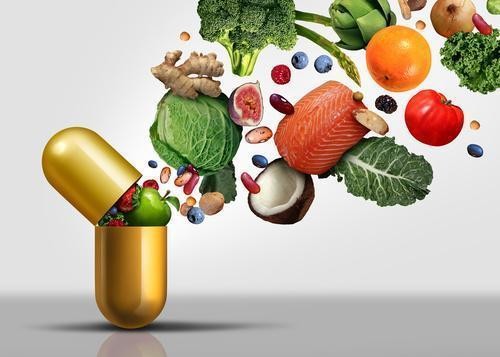
Tips & Tricks
- Calcium and vitamin D slow down bone loss. In addition to dairy products, you should also eat more parsley, broccoli, sesame or tofu, which are rich in calcium.
- In addition to conscious nutrition and exercise, fresh air and sufficient sleep strengthen the body's own defence.
- Check your body weight regularly. Both overweight and underweight promote certain diseases. Get advice from your health care provider if necessary.

Nutrient-rich nutrition - but how?
When we get older we need less energy supply than before. At the same time, the need for nutrients, vitamins and minerals remains high. Which foods and eating habits do we addopt to avoid overweight or deficiency?
Calcium, vitamin D, vitamin B12, folic acid and zinc - these nutrients are indispensable when we get into our golden years. It is important to know that they influence each other in their effectiveness. A vitamin B12 deficiency, for example, can mean that the body cannot process folic acid. Stress can also slow down the absorption of nutrients. A balanced and harmonious lifestyle therefore also plays an important role in healthy eating.
These nutrients are essential:
- The interaction of calcium and vitamin D is important, for example, to maintain bone density. Dairy products, especially hard cheese, are good for the calcium supply. But parsley, kale, broccoli, sesame or tofu also contain plenty of the mineral substance. The body produces vitamin D itself if you are regularly exposed to sunlight. The vitamin is only found to a limited extent in foods, for example in salmon and herring, liver, egg yolk and certain edible mushrooms.
- Vitamin B12 is important for metabolic processes. It helps to break down certain fatty acids. It also supports blood formation by converting folic acid into a form that the body can use. Vitamin B12 is found almost exclusively in animal foods, i.e. in fish, meat, dairy products and eggs. An important source of folic acid is green leafy vegetables such as spinach, but also legumes, whole grain products, egg yolk and liver.
- The trace element zinc is important for the immune system. A zinc deficiency weakens the body's defensive function and makes you more susceptible to infections. Wound healing is slow and poorly when there is a deficit. A lot of zinc is found in animal products such as meat and cheese, but also in oats, wheat bran, nuts and seeds.
- Vitamin E, vitamin C, carotenoids and secondary plant substances "catch" free radicals and thus strengthen your body's defense mechanisms. If you eat a lot of fruit and vegetables on a regular basis, you will get sufficient antioxidant nutrients.
High nutrient density meals
You can easily implement these tips in everyday life if you pay attention to a high nutrient density of your food. Foods with a high nutrient density provide comparable amounts of nutrients, vitamins and minerals in relation to their energy content. This is especially true for fruit and vegetables, but also for legumes, whole grain products, potatoes and meat. Additionally you can increase the nutrient density of your meals by using fresh herbs, nutritional yeast, sprouted grains (e.g. wheat germ, brown millet etc.) and also sprouts. Indispensable are cold-pressed, high-quality oils, easily digestible protein (e.g. fish) and - not to be underestimated - sufficient water intake.
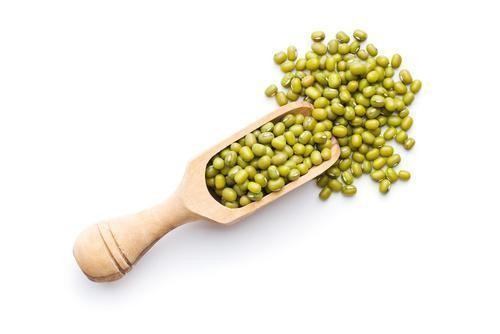
If you don’t drink water, you’ll really damage your health
Lack of fluids - and dehydration - has enormous effects on body and mind. Not only headaches, low blood pressure and urinary tract infections are the result, but also typical symptoms of "old age" such as forgetfulness and a tendency to fall. Because, too little fluid intake worsens short-term memory and information processing.
- Therefore drink at least 1.5 liters (51 fl.oz) of water daily.
- Make it a habit to drink small amounts (e.g. 100 ml / 3 to 4 fl.oz) at regular intervals throughout the day.
- If you do not feel thirsty, you can trick yourself: prepare your ration of mineral water every day in the morning. This way you can keep track all day long of how much you actually drink throughout the day.
- Another interesting tidbit - if you trink hot water you do not quench your thirst. Thus, it is easier to drink more.
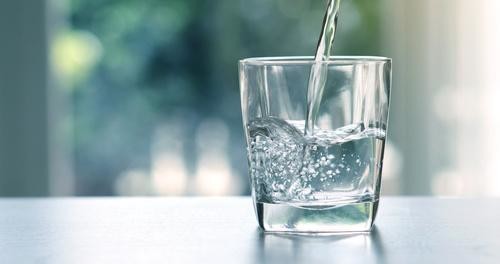
Preventing illness – how about a spa treatment?
A spa treatment is good for everyone and it’s an effective illness prevention too – because prevention is better than a cure. While spa treatments used to be a privilege of the upper classes, many spa treatments maybe available at a lower cost at your gym.
Think about sauna, hot tub or massages, which are all good for relaxation and pain or muscle tention.
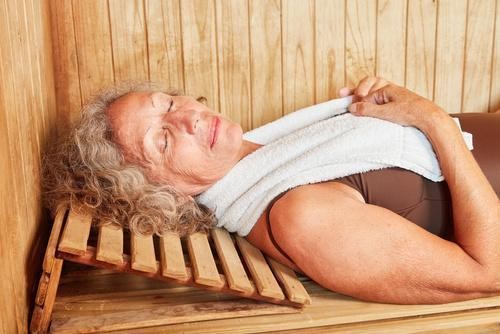
Step by Step
Find your treatment for body relaxation and inner balance. What will make you happy? For some it is just a walk at the beach or a hike in the mountains, for others it's a massage or a spa treatment with hot stones, mud bath and cucumber eye pad. Find your happy place and follow the path to well-being.
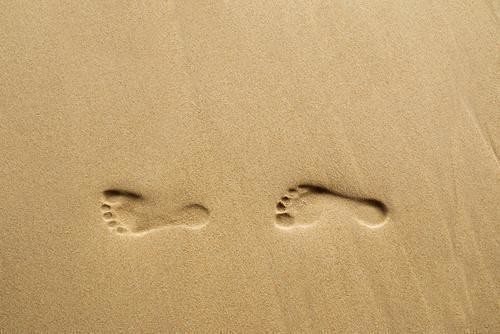
Fango, Thalasso, Kneipp & such - what kind of treatment fits?
A large selection of proven therapy and healing methods is available to you. We will introduce you to the available procedures, the indications for which they make sense - and how you can treat yourself to a little spa treatment at home.
A large selection of proven therapy and healing methods is available to you. We will introduce you to the available procedures, the indications for which they make sense - and how you can treat yourself to a little spa treatment at home.
There is a large selection of health spas and retreats in every U.S. state. They include mineral and thermal springs, mud baths, climatic spas, and sea spas. Depending on the symptoms, different therapies and healing methods are suitable. Fango packs made of mineral-rich healing earth mud, for example, warm the body and stimulate the blood circulation. The pores open so that the minerals can penetrate the skin more easily and have a soothing, relaxing effect.
Enjoy a (hot stone) massage, sauna or steam room – or simply sit in the hot tub and relax. Find what makes you feel good!

The spa treatment in your own home – the alkaline bath
How about your private spa treatment at home? It is easy to integrate into everyday life and costs very little. Tip: Pamper yourself with an alkaline bath! With its mineral salts it promotes deacidification via the skin.
- In preparation, pamper yourself with a brush massage that stimulates the metabolism.
- Use about 37°C (98°F) warm water in the tub and add about three tablespoons of alkaline bath powder (follow instructions on container). The salt causes the bath water to reach an alkaline pH value of about 8. Your pores open and the acids can escape through the skin.
- Stay in the tub for significantly more than 20 minutes - a bath of about one hour is ideal.
- Finish the bathing ceremony by pamper your body with a high-quality, nourishing body oil.

How to enjoy menopause
Do the symptoms of menopause (andropause) have to be endured and survived? Absolutely not! There are many ways to deal positively with the hormonal change and alleviate symptoms - for example, by changing your diet.
After all, menopause - the climacteric period - can last up to ten years. For some women it starts at the age of 35, for others it shows up around 50. In any case, it is helpful to acknowledge this "transition to more important things", as climacteric means, as a special phase of life. The secret - treat yourself well and with care, but also face new challenges with confidence.

What happens to body and psyche during menopause?
Often it is the physical changes that are the first thing that indicate that you have reached the middle of your life. As a result of the hormonal changes, the ovaries gradually stop working, and the production of the female sex hormones estrogen and progestin decreases. Menses become irregular and eventually disappear completely. Many women complain of hot flashes and sleep disturbances. The muscle mass decreases, so that the daily energy requirement is also reduced. Those who do not change their diet then, quickly gain weight. This in turn increases the risk of diabetes, high blood pressure, fat metabolism disorders and cardiovascular diseases. The ups and downs of hormones also have an impact on the psyche of many women. Quite a few suffer from mood swings and depression. The zest for life is gone - and one simply feels empty and useless.
Nevertheless, we would like to encourage you to find an appreciative approach to the menopause and above all to yourself.
Tips for You:
- Reconsider lifestyle and diet: by changing your diet, you can bring about a metabolic change - and in this way restore hormonal balance. A suitable nutritional program like Metabolic Balance, for example. The program is tailored to your needs. If the blood analysis shows, for example, a mineral deficiency, the plan specifies a particularly high amount of calcium-rich vegetables. Soy products are also frequently recommended during menopause because soy contains added phytoestrogens - plant hormones similar to estrogen. Gynecologist who work with Metabolic Balance report up to 70% of participants in menopause were able to reduce their medication and in some cases even stop it altogether. The symptoms have improved solely as a result of the change in diet.
- Celebrate the new beginning: a positive attitude is more effective than any medication. Menopause is part of life. The female body is also subject to the rhythm of nature. Think of this time as an opportunity - for a new start and a better understanding of your womanhood.
- Also important is exercise! Movement plays an important role in menopause. We recommend moderate activities like cycling, walking or swimming. This not only releases the happiness hormone serotonin, but also benefits bones and muscles.
Menopausal men - crisis of purpose or new beginning?
Men also go through menopause and, from a certain age onward, start to deal with physical and psychological changes. The important thing is to do something good for yourself and your body - and start new projects.
In the "climacteric virile" (also called "andropause") the production of the sex hormones decreases. From about the age of 40 onward, the male body has less testosterone available from year to year. However, this does not apply to all men. In one study only one fifth of the men tested had low testosterone levels. Thus, andropause is something very individual. It is completed around the age of 75.
In contrast to women, men have significantly less pronounced symptoms, as the male climacteric tends to be gradual. Nevertheless, it is possible that you will experience typical menopausal symptoms. The psychological challenges of this phase of life should not be underestimated.
Typical symptoms for the altered hormone balance:
- decrease in libido and erectile dysfunction
- reduced facial hair growth and hair loss
- less muscles, but increased fat storage
- bone loss and joint pain
- hot flushes and sweats
- mental complaints such as thin skin, irritability, restlessness, tendency to nervousness and depression
Crisis of purpose - what's next?
Regardless of the physical changes, many men find it difficult to realize that they have passed midlife. Many begin to question their lives. Can that be all? Where do I still want to go? If you have defined yourself strongly through career and recognition, you are probably troubled by feelings of loss and the fear of not being able to keep up.
Our tips:
- Reflect on what you have achieved. Then think calmly about what important projects you want to tackle in the future. What goals, visions and dreams are motivating you?
- Moderate exercise is helpful. It helps you gradually lose weight, which in turn raises your testosterone levels.
- Explore a different picture of male sexuality. Set yourself free from the pressure of always wanting and having to be able to do everything.
- Be careful with hormone replacement! Testosterone in the form of tablets, patches, implants or the like are suspected of promoting the development of prostate cancer.
- It is preferable to change your eating habits to a hormone-balancing diet. A suitable dietary program would be Metabolic Balance for example. This can reduce many accompanying complaints.
Eating right for hypertension
When it comes to hypertension, nutrition plays a key role. Actively contribute to lowering your blood pressure - by following a few rules when you eat.
One out of three adults in the U.S. suffer from high blood pressure. (Numbers from the Anmerican Heart Association, 2013). But when does blood pressure actually become too high? If your physician measures values at 140 to 90 mmHg (millimeters of mercury) or above on different days, you are affected.
The good news is high blood pressure can be treated. It is important to connect with your health care provider and talk about the right medication. Adequate exercise and relaxation are equally influential. It has also been proven by numerous studies that you can also achieve amazing improvements with specific foods.
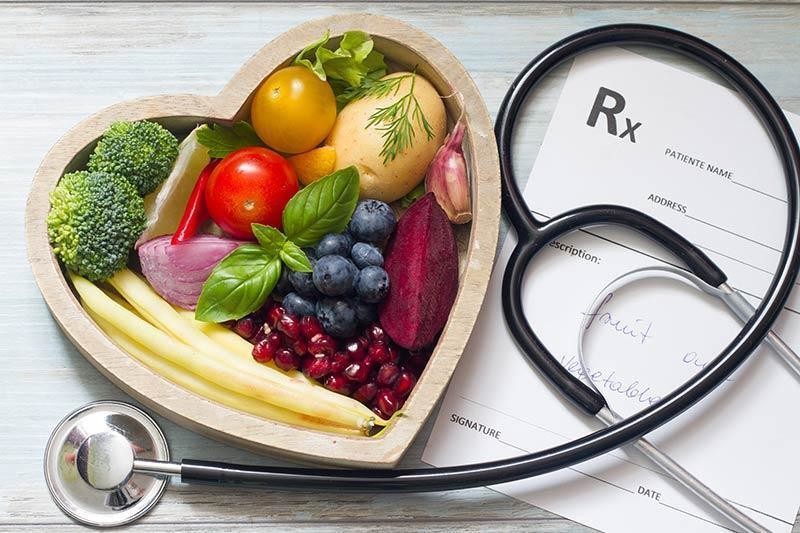
Nutrition tips to combat high blood pressure:
- Avoid fatty, salty and non-balanced food. It is not surprising that people in industrialized countries in particular are affected by hypertension because of their unhealthy lifestyle.
- Refrain from alcohol or at least drink in moderation. Alcohol increases blood pressure and also promotes overweight - a risk factor for high blood pressure.
- If you are overweight, a professionally supervised, healthy weight reduction would make sense. For every kilogram of body weight lost, your blood pressure value would drop by about one mmHg.
- Eating foods with saturated fatty acids is a major risk factor. These include above all processed meats, cheese and butter. Omega-3 fatty acids and monounsaturated fatty acids, on the other hand, lower blood pressure. Therefore, make sure to use flax seed oil, walnut oil, wheat germ oil or olive oil. Replace animal fats by vegetable ones.
- Reduce your salt consumption to a maximum of six grams (~ 1 tsp.) per day. Alone avoiding processed foods, like ready-to-eat meals, are a good way to go. Bread, hard cheese and sausages or breakfast links also contain a lot of salt. Instead of using table salt, use spices when cooking. Be creative!
- A Mediterranean cuisine with lots of vegetables and fruits, dairy products, little meat but more fish is recommendable. This diet has been proven to lower high blood pressure in the long term.
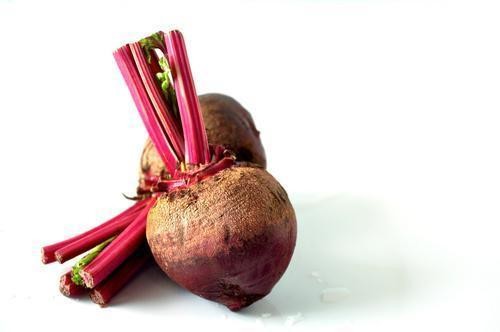
Tips for more exercise in everyday life
People who exercise regularly not only reduce their risk of chronic diseases, but also keep themselves mentally and physically fit. But how active are you really in your everyday life? What can you do to develop new healthy habits?
Lack of exercise is a particular health risk. This applies to children and adolescents as well as to young and older adults. Regular exercise strengthens the immune system and is therefore the best prevention against diseases such as diabetes, osteoporosis and high blood pressure. Those who are already suffering from a disease can actively reduce its course with the help of the appropriate type of physical activity.
Physically active people remain capable of performing well into old age and are also in the middle of life. Because they like to make new friends, thus maintaining their zest for life and preventing depression and loneliness. Moreover, exercise helps us to maintain a healthy body weight.
But the older you get, the more difficult it seems to find new, healthy activities. Especially if you were previously rather a nonathletic person. With the change in diet, enzymes such as Foxa 2 are formed more intensively and thus the desire for movement is activated.
Every step counts - that' s how you become more active in day-to-day life:
- The rule of thumb is to reduce the time you spend sitting. For example, you can stand when you're on the phone or walk around.
- Walk more. For example, walk up stairs instead of taking the elevator. This exercises your leg muscles and strength.
- Why don’t you do your shopping by bicycle instead of by car? Take a walk during your lunch break.
- You haven’t exercised regularly in a while? Then we recommend that you seek advice from your doctor to identify possible health risks.
- Find out what kind of sport you like – because if you enjoy something, you’ll be motivated to do it on a regular basis.
Which exercise is right for you?
Our bodies love exercise and work-out also in the golden years. Depending on your health, level of training and personal preferences, certain exercise is particularly suitable for you. Find the right one!
Each type of movement demands the four levels endurance, mobility, muscle strength and balance in different degrees of intensity. A certain exercise is the right one for you if it suits your wishes and your physical prerequisites. In the case of overweight and osteoporosis, for example, only certain types of exercise will be suitable for you. If you want to be on the safe side, it’s best to to talk with your health care provider and get suggestions.
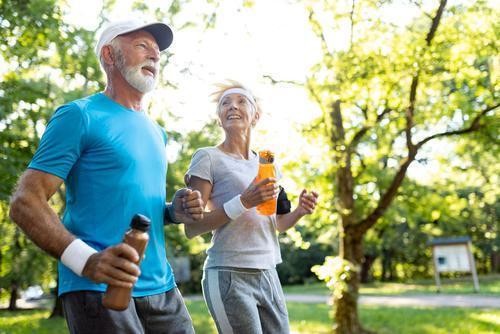
Endurance
While in endurance activities, the body is in motion over a longer period of time. Typical endurance training is walking, hiking, jogging, fast walking, Nordic walking, cycling and swimming.
Advantage of endurance training is ...
- it can be started at any age.
- You can integrate an endurance exercise into your daily routine at any time.
- Previous experience, e.g. in ball sports, is not required.
- Endurance exercises provide effective protection against cardiovascular diseases
Mobility
Elasticity and flexibility are crucial for our quality of life – i.e., you can avoid damage to your posture.
Exercises that promote mobility include:
- Yoga
- Tai-Chi
- Qi-Gong
- Stretching exercises
These forms of movement are very gentle and health-oriented. Generally, you should start new exercises under professional guidance.
Balance
Balance is the prerequisite for safety and stability. It also has a positive effect on both body and psyche – and you can train your balance! The basic principle – bring your body into an unstable position and still remain upright and straight. A typical balance exercise is standing on one leg. The advantage of these exercises is, that they are easy to do and can be done at home or anywhere you are.
Muscular strength
From climbing stairs to carrying shopping bags - we need strength for many everyday activities. Those with strong muscles also ensure solid bones, supple and healthy joints and an upright posture.
You can increase your physical strength through strength training, for example, with dumbbells, weight cuffs or on specialist equipment.

